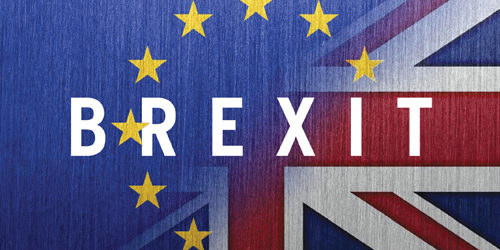
EXCLUSIVE INTERVIEW: Tim Boag, London & South East Managing Director at NatWest, talks to Maarten Hoffmann about the future of the bank, Brexit, cyber crime and how the bank will be promoting its range of brands
RBS is one of the largest banks in the world but has been through some torrid times of late and has spent the last few years fighting to get fit and shed the misery of the past few years. With hard work and some very tough decisions, the management team of the bank can see the light at the end of the tunnel. Away from the legacy issues, the bank is quietly building an operating profit which bodes very well for the future.
In this exclusive interview, Managing Director for London and the South East, Tim Boag speaks candidly about the legacy issues and the bright future that lies ahead.
RBS results and performance
How is the bank actually performing? The press would have you believe that the bank is in permanent crisis-mode, but how robust is the bank?
“Our underlying results are strong,” says Tim. “We’ve had eight quarters of generating strong underlying operating profit, so the business that our customers deal with day-to-day is performing well. Our relationship managers are doing a good job. I guess our customers wouldn’t be doing business with us if we weren’t doing a job that met their needs.
“We have some legacy issues. One is Williams & Glyn (more on this later), the other one is the potential RMBS fine (the penalty to be decided in relation to residential mortgage-backed securities, or RMBS, sold in the US before the 2008 crisis).
“We don’t know the RMBS number. We have made a provision which is up to over £6 billion. We have seen some of the other banks settle, which gives us a better idea of the range.
“Our chief executive, Ross McEwan is confident that if we can get these things done this year, people will stop talking about these legacy problems. They relate to a past culture and a past organisation. We can then start talking about the business underneath that, which is performing very well, and the vast majority of our resources is very much focused on that go-forward business. We were the fastest growing in terms of £24 billion in net new lending last year - with £9 billion in commercial business – that’s something that we’re proud of.
“We’ve often been criticised for not lending money but we are out there doing it and as the new strap line in the advert says: We are what we do. And we’ll be judged by that. So on the ground we’re doing well, the mortgage business, the personal business and the commercial business in England and Wales were all doing really well last year.”
RBS or NatWest?
The stronger performance in England and Wales is an interesting point, as the news coming out of the bank is that these markets will be more heavily branded as NatWest. To get a feel for the direction the bank will be taking, a good starting point may be the rugby Six Nations. RBS has been headline sponsor since 2003 but last summer David Wheldon, Chief Marketing Officer at RBS, announced, “As we focus back on our home markets in the UK and Ireland, we have decided not to renew the sponsorship beyond 2017.”
Was this just another way of saying that the RBS branding is being downplayed in favour of the focus on NatWest?
Tim Boag replies, “I think it’s brilliant what we’ve achieved in supporting the Six Nations, but I think that every now and again there is a need to re-calibrate to the market and look at our branding going forward. In the corporate world, NatWest is becoming more our leading brand. It will be our leading brand for business in England and Wales.
“It’s a ‘Bank of Brands’ type of approach, so it’s not just NatWest. NatWest is our biggest brand, business and personal, in England and Wales because we’ve got the majority of branches. But also we’ve got Lombard, Coutts, Isle of Man Bank, Drummonds and Holt’s.
“All these brands have their own franchises and their own identity, and we feel that we get more traction through investing through those brands than we would by focussing on the RBS brand. RBS is a global brand, much more than NatWest and we are looking more at the personal and the business banking markets in the UK and Ireland, rather than positioning as a global bank.
“We effectively have dual branding at the moment - our largest customers associate with RBS, but most of the customers are served by regional offices, which is usually NatWest.”
“It is part of an on-going process to bring the NatWest brand to the fore in England and Wales. At the same time, the bank’s primary customer facing brands elsewhere will be the Royal Bank of Scotland in Scotland and Ulster Bank in Ireland.
Williams & Glyn
One brand not mentioned in Tim’s list is Williams & Glyn. After the UK’s government’s intervention in buying up RBS shares, the European Union decided this amounted to state aid, and therefore part of the bank should be divested. The Williams & Glyn name was resurrected, representing the Royal Bank of Scotland branches in England and Wales and the NatWest branches in Scotland. But the required sale has failed to materialise.
“We’ve been trying to sell Williams & Glyn as a business,” confirms Tim. “It includes our UK branch network and the customers who’ve banked in that network for six or seven years, but it has proved to be very complicated.
“Clydesdale was mooted to have an interest, and Santander made its interest on a couple of occasions but we haven’t been able to get across that line with a buyer on terms that work for us. It’s a very complex process to segregate a bank in its entirety and sell it cleanly, so the discussions we’ve had with the Treasury have been “Is there another way we can do this?”
“The original intent was to have more competition in the UK as a result of the state aid received by RBS. I think we’ve got some good proposals. They’ve not been approved by EU, so that has to go through the EU governance process. So we shouldn’t be getting ahead of ourselves on that.
“There are a number of suggestions that we have proposed in which RBS will support and fund competition in the SME world that will help achieve the original objectives of increased competition.”
Seeing as we are now in negotiations to leave the EU, is it not tempting to play for time and wait until Brexit happens. After leaving the EU, will it matter what their directive is?
Tim dismisses such a suggestion: “We’re still committed to that original agreement, as I understand it. Just because of Brexit, we cannot just walk away from our historic obligations. We still have to see that through. It’s just that rather than the sale, we’ve got an alternative proposal that’s under consideration.”
Brexit
Having raised the thorny subject of Brexit, what is the view of the bank on the implication of the UK’s exit from the EU for SMEs?
“It’s difficult to predict what the precise outcome would be. Our view would be similar to some of the commentators at the Bank of England and IMF, in that we would expect growth rates to be lower than they were forecast to be before the vote.
“There are some businesses that are quite publicly talking about how they might invest in Europe as opposed to the UK, particularly in financial services.
“If there is lower growth we need to think about how it’s going to impact our customers, particularly if it is alongside higher inflation and input costs, potentially combined with business rates rises. These factors may coincide with lower consumer demand. We’re conscious that customers may need to focus on their cost base and look quite closely at how much of that they can pass on to the consumer without damaging demand.
“We’re not changing our policies around lending to customers, but we are mindful that some sectors will be impacted more than others, therefore in terms of supporting those customers we need to think about how we do that.
“We are a barometer for the UK economy – we’re largely a UK and Irish based bank now, so whatever happens to the UK economy is going to impact on our customers and our results. We’re completely aligned with the economic experience our customers will have as well. If you look at our lending book, it’s in good shape. We think our lending policies have been pretty good in the last four or five years and our house is in good order.
“There will be some headwinds along the way. There is a consistent view that there will be an impact because we can’t have the deal we’ve got now, which is the same as the other members. It’s likely to be a degree worse.
“However, the majority of our SME customers are getting on with running their business, and they’re doing that because they don’t have a crystal ball. Why stop? They have a business to run.
“At the top end we did see some dampening of demand in some of the larger transactions, M&A tailing off a little bit immediately after Brexit. Since then we’ve seen some of that come back with continued activity in the smaller end of the market.
“One of the barometers that I use in terms of understanding how our customers are feeling is looking at our balance sheet, our loans and advances, and they steadily increased last year month-on-month; they’re still increasing as we go into this year. That tells me there’s still a good degree of confidence and there’s still some positive momentum in our economy.
“I had talks with my team and we agreed, “Let’s not look for things that aren’t there. Let’s focus on what we can control. Let’s keep the discipline in terms of how we approach credit, the way we support our customers.””
Safe & Secure
One threat that faces us all is cyber crime, and Tim is proud of the role that the bank plays in educating businesses:
“We are very active in helping customers in terms of education around fraud and cyber crime and we hold regular events on the subject. We need to be talking to not just customers, but colleagues as well, to make them aware of the latest scams, pointing them in the right direction. It’s in the interest of the bank and our customers to minimise any losses from fraud.
“There’s a sophisticated side to fraud and cyber crime. But there are also some very simple things we can do. For example, dual controls on payments; a lot of businesses have not got dual control. We’ve identified those customers, and we’ll be going out and speaking to them specifically on that issue. This is a basic principle because one person can get duped – it’s more difficult for two. Sometimes you do get a bad apple in a company, but if you’ve got two people, you’ve got more control. I think it’s just good practice.”
Digital
Although cyber crime is a big problem, the benefits of the digital age far outweigh the negatives. How is the bank embracing new technologies?
“We are piloting a new solution called Esme, which is a digital loan application process for businesses applying for loans up to £150.000, 24-7. It allows decisions to be turned around very quickly. It sits alongside the bank and it’s another way of offering something that’s simple, easy to understand, quick and reliable. It’s another way of customers engaging with us.
“Esme is a good example of us working with fintech, and there are lots of alliances that we have built up. We have a physical presence in Silicon Valley. We’re working with these businesses because we think that it’s better to work with them and to embrace and learn from them, in order to build alliances and partnerships, as the technology moves very quickly.
“We have a lot of understanding of the broader market franchise – they have the great ideas. So let’s bring them together and see what we can do. Esme is a good example of that.
“We’ve also developed something called Nift, which is safe-to-sign software. A lot of our customers may see the legal documentation as complex, so this is a way that we can help them navigate through the key terms of important documents. They can get some comfort that what they’re signing up to is something that is clear to them.
“Another thing we have done is simplified our deposit offering and reduced the number of product options. Customers have actually responded quite positively to the fact that the choice is very clear and straightforward, especially the transparency around charging and rates.
“In fact, by reducing the number of options we’re making the products clearer and the choice clearer.
“What customers want is things to happen quickly and easily. Can we do it faster, can we do it simpler? Customer behaviour is changing and part of that is because the offering they’re receiving not just from banks but other organisations, is becoming more digital. Their behaviour is changing, so we need to respond to that. We’ve had something like 20 times more digital transactions with our customers than we had in 2012. We have about 4.6 million people banking with us online now. On the flip-side, we have 40% fewer visits to our branches than we had five years ago.””
Branch closures
The dramatic change in customer behaviour brings us onto another contentious subject - that of branch closures. No-one wants to see their local bank branch shut down, but is it an inevitable cost of progress?
“There are a number of factors why we close branches. One is that there are fewer visits. There is undoubtedly an efficiency point, or a cost point, about how much it costs to run a branch as opposed to how valuable our customers feel it is. There are alternative ways of engaging with our customers which suits them and our cost base is still too high.
“When we do close a branch it’s important to have the right leave-behind propositions for our customers. Our business customers may be used to banking in a certain way and if we’re going to change that, or take that away from them, then what is the leave-behind? What are the alternative ways of banking and of managing your needs?
“If we’re going to close a branch, we do a lot of analysis around our personal customers and business customers. We’re increasing our mobile banking through the mobile branches, and we’ve got several of those that travel around the South East.
“Additionally, we have Community Bankers and TechXperts, the latter of whom will be based in every branch across the country from the beginning of May. We have also invested heavily in some key branches for the long term. For instance, Chichester is a flagship branch for us.”
Entrepreneurial Spark
One of the big success stories for the bank has been the small business incubator, Entrepreneurial Spark, which has created a £176 million turnover and 1300 jobs.
“We are proud of it,” says Tim. “We’ve invested a lot of resources in it, so we haven’t done it by half, we’ve done it properly. We focused on the entrepreneur in terms of the entrepreneurial mindset. We’ve created an environment where entrepreneurs can learn and succeed. And off the back of that we hope that we will build advocacy, i.e. people will talk about us positively, because they know that NatWest is powering ESpark.
“We’re now looking to develop that proposition into businesses at the next stage, starting to scale up, not just the start-ups. We will aim to help businesses that may be turning over £1 million or £2 million but are starting to face new challenges like: “Where am I going to trade from because I can no longer do it in my garage or my back room?” Or it might be “I’ve got an import/export issue here. How do I start to trade internationally? What sort of management structures are needed? Where do I get the people?” And some of it is finance as well. “How can I get finance to invest in my business so I can scale up more quickly?” These are the things that we’re starting to invest more time in.”
Ambition and the future
The bank has regularly expressed its desire to put the customer experience first. Above the bank’s boardroom in London is a quote by Andrew Berkeley Drummond, whose family founded Drummonds Bank, which RBS still owns. The plaque spells out Drummond’s golden rule: “The first rule never to be departed from is to make the welfare of the customers the first object.”
What does this mean in reality? Is it just a sound-bite?
“Our ambition is to be number one for customer service, trust and advocacy by 2020, that is the top of the pyramid, and everything else we do underneath that in terms of our values, our behaviours, our financial goals, our personal goals, return on equity – everything is about supporting that.
“We do need to be financially stable and safe to be able to do all the things we do for our customers but ultimately anything else is just short-term; whereas if that is your key guiding principle, then you’ll always be thinking longer-term, about a sustainable business that builds trust and retains customers by helping them.”
It’s been a long journey but if the Bank of Brands maintains its commitment to customer service, even the national press and TV news may start talking about the bank in a positive light.






